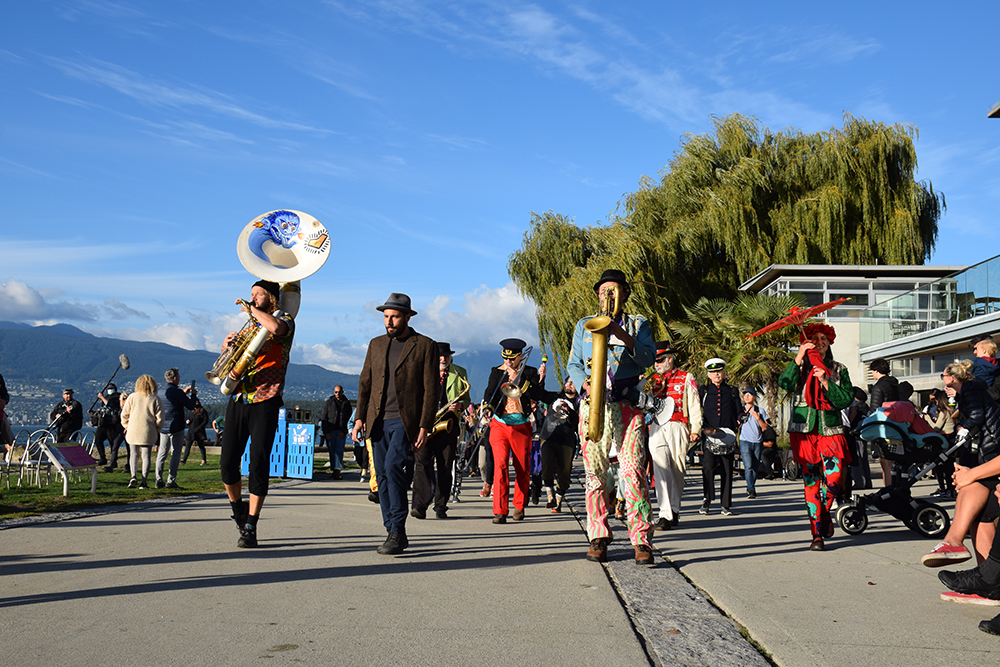Open Access Workshop with Carmen Papalia
Join artist Carmen Papalia on December 17th at 4pm for Open Access: Setting a New Cultural Standard for Accessibility.
From the time disabled people were invited into museums, their access was imagined for them by non-disabled decision-makers, a trend that not only continues today but has shaped the access that disabled artists, curators and, cultural workers have within the visual and performing arts. The first museum programs that were meant for disabled visitors, such as the talks that the Metropolitan Museum of Art offered blind schoolchildren in 1913, reflected the patronizing service provision models for care and participation that have created harmful power dynamics between disabled people and their non-disabled counterparts. Like many of the so-called ‘accessible programs’ that followed, they promoted the privileged visual art experience and reinforced the standards that disabled bodies, minds and, behaviours were measured against in medical settings.
In these early examples of public outreach, art and art history was approached in a way that reflected the culture of the time, from a colonial perspective that operated under the premise that white, cis, non-disabled experiences were the norm. These beginnings set a predetermined route for the broader disability community within the field, one where they lacked the agency and decision-making power to self-define and participate on their own terms.
In this workshop about creative and justice-oriented accessibility practices, nonvisual social practice artist Carmen Papalia will introduce participants to his 2015 Open Access manifesto, a conceptual framework for accessibility that moves beyond compliance-level measures with guidelines for mutual care. Papalia will share the ideas that have guided his work and advocacy over the last 10 years, including the principles of Disability Justice and the work of figures in the broader disability movement. Participants will have the opportunity to reconsider how they approach accessibility and public engagement towards the beginnings of a new practice of accessibility that honours disability culture in its wholeness.
This workshop is intended as a point of departure, a context where participants can determine what accessibility means when approached as an ongoing creative process that is guided by community needs.
Note: participants are encouraged to bring examples of creative accessibility that can be shared in a virtual setting.
ACCESS: auto-captioning, live-captioning, ASL and, graphic recording will be provided during this event. Transcription of the discussion will also be made available one week after the event. If there are other barriers for you to access this event please email sunshine@othersights.ca or call Sunshine 604-362-2484. We will try to assist however we can.

Image Caption: Carmen Papalia performing Mobility Device with Carnival Band in Kitsilano, Vancouver, October, 2021.
Image Description: A row of four individuals walk facing frontwards. The central figure wearing a grey fedora hat, a brown jacket and sweater and dark jeans is artist Carmen Papalia. The person on the far left is wearing dark black pants, a colourful shirt, and is playing a large white and bronze tuba that has a drawing of a blue cartoon character coming out of the horn opening. On the right side there is a person wearing pink, green and white patterned pants, a jean jacket and a black hat. They are playing the saxaphone , on the far right is a fourth person who is wearing colourful red, green and black pants, a red, green and black jacket, a red floral flower wreath on their head and they are holding up a red parasol. Behind these four figures are several more rows of people who are all playing different instruments, they all are walking in the same direction as the for figures in the front row. These are all members of the Carnival Band. In the distance behind this band there is a building on the right as well as a large green leafy willow tree. In the background on the left side of the image, there is blue sky spotted with white clouds as well as mountains in the far horizon line. The figures are all walking forwards on a cement pathway flanked by green grass on the left and a building on the right.